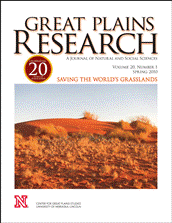Center for Great Plains Studies

Great Plains Research: A Journal of Natural and Social Sciences (through 2013)
Date of this Version
Spring 2002
Document Type
Article
Abstract
Although rangeland grasshopper populations have been studied for more than 120 years, little is known of the spatial patterns in grasshopper numbers between outbreak cycles. This information is necessary to understand how grasshopper outbreaks develop and to correctly design research, monitoring, and modeling projects. We used exploratory data analysis and geostatistics to identify the spatial patterns in grasshopper numbers for 1993 through 1997 in Colorado. The same family of models (spherical) provided the best fit to the sample data for all years, which implies that similar processes influenced grasshopper densities over these years. The parameters of the models differed among years, however, which suggest that the scale of spatial patterning changed over time. Since Colorado grasshopper densities were patterned at scales larger than those reported for other areas of the Great Plains, our results suggest that survey methods for Colorado are not adequate to identify small-scale “hot spots” of high grasshopper numbers, inhibiting prediction of potential outbreak foci in this region.


Comments
Published in Great Plains Research 12:1 (Spring 2002): 101-22. Copyright © 2002 Center for Great Plains Studies.